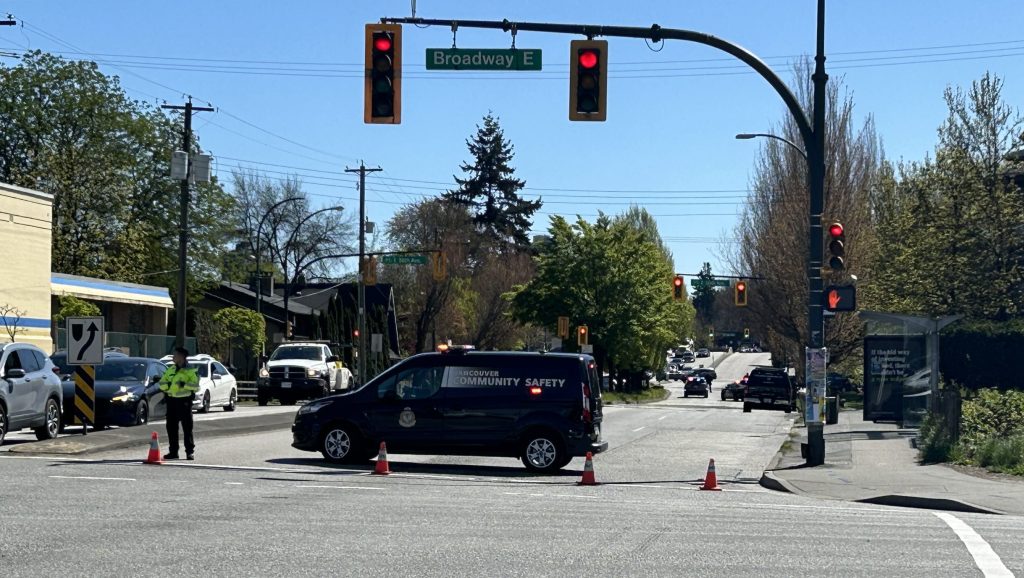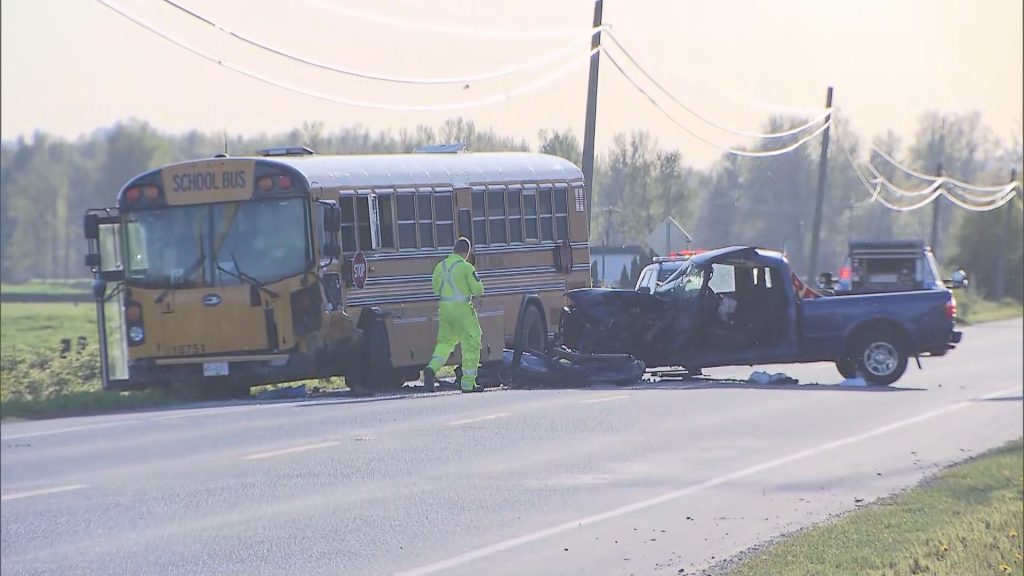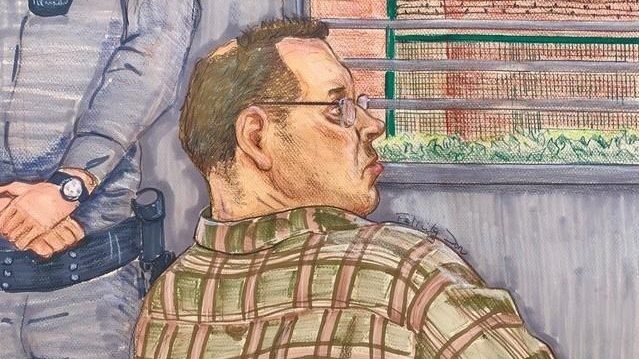Southern Utah museum benefiting from Bears Ears debate
Posted April 26, 2018 11:03 pm.
Last Updated April 26, 2018 11:40 pm.
This article is more than 5 years old.
SALT LAKE CITY – The museum here is nestled just off Highway 191, which unspools like a conveyor belt into the centre of this rural desert town, where mostly juniper trees and sagebrush dot the dusty red landscape.
Inside the doors of the small brick building, though, are a half-million ancient American Indian artifacts all uncovered from these seemingly empty hills. Painted pottery, rare and unmatched, fills the shelves. Arrow points once used for hunting are now perfectly aligned in neat rows for display. Woven baskets with intricate designs sit under glass cases with fingerprints left from curious kids who have peered in.
It’s the largest collection of Puebloan antiquities in the Four Corners region. And in 2011, the state wanted to close it.
It was during the depths of the recession when lawmakers decided this place — Edge of the Cedars State Park Museum — was “a financial burden.” It required nearly $440,000 of state funding annually to stay open at a time when they were frantically cutting costs. The depository, they said, must make more money or shut down.
Its director elected for the first option, trimming staff and slashing budgets but still opening every day at 9 a.m.
Now, seven years later, slowly, cautiously, but surely, the museum has started to revive. Like much in this secluded southeastern corner of the state, it’s gotten a second life with the national monument attention on nearby Bears Ears.
The contested designation — issued by the Obama administration and rolled back, in part, by President Donald Trump — has drawn thousands of new tourists to the area. Most drive through Blanding to get to the monument. Many follow the signs along the way leading to Edge of the Cedars.
“We’re kind of a hidden gem,” said Chris Hanson, the facility’s manager. “But suddenly the word’s getting out there. We’re in much better shape.”
Since 2011, the museum’s revenue has more than doubled. It has cut its dependence on taxpayer funding by nearly $140,000. And, during the past four years, the number of annual visitors crowding in to see the thousand-year-old artifacts has risen by almost 4,000 — more than the population of this small community, the most populous in San Juan County.
It’s just one example, but in this place, perhaps more than any other, the impact from Bears Ears has been clear and measurable and significant.
‘AN UPTICK IN ATTENDENCE’
The monument’s namesake buttes sit 30 miles away, a clear view from the museum’s upstairs windows. On the other side of the building, the parking lot is about half filled with minivans and trucks.
That’s pretty good for a Friday afternoon in early April, Hanson shrugged. “We’re still easing into it.”
Edge of the Cedars, though, saw a record-high 12,489 visitors in 2017, the first year after then-President Barack Obama designated the national monument. Just four years earlier, 8,950 people came. Its popularity, too, has tracked with some of the major events and political decisions surrounding Bears Ears.
When Interior Secretary Ryan Zinke visited the monument last May, for instance, the museum saw a spike of 2,026 tourists that month — the peak for the year. And shortly before President Donald Trump came to Utah to shrink the designation in early December, 1,198 people visited — three times what it had seen any previous November.
Cedar City resident Jeff Hignite is one of those visitors. He heard about the museum while researching a hiking trip to Bears Ears about the same time the federal government announced the public comment period for the downsized monument’s boundaries.
The 35-year-old brought his two sons to Edge of the Cedars during their spring break this month to learn the human history of the place they were visiting.
“This is neat to look at,” said Mayson, 16, pointing at a photo of archaeologists standing next to petroglyphs.
“It’s really cool how this stuff is original,” added Skylar, 14, next to a case of baskets.
The museum was founded in 1976 so that artifacts found in the archaeologically rich San Juan County could stay in the area instead of being shipped off to big exhibits around the country. The pieces date from A.D. 600, when the Anasazi people thrived, to the 13th century, when they vanished from Cedar Mesa.
Cedar City resident Jeff Hignite is one of those visitors. He heard about the museum while researching a hiking trip to Bears Ears about the same time the federal government announced the public comment period for the downsized monument’s boundaries.
The 35-year-old brought his two sons to Edge of the Cedars during their spring break this month to learn the human history of the place they were visiting.
“This is neat to look at,” said Mayson, 16, pointing at a photo of archaeologists standing next to petroglyphs.
“It’s really cool how this stuff is original,” added Skylar, 14, next to a case of baskets.
The museum was founded in 1976 so that artifacts found in the archaeologically rich San Juan County could stay in the area instead of being shipped off to big exhibits around the country. The pieces date from A.D. 600, when the Anasazi people thrived, to the 13th century, when they vanished from Cedar Mesa.
‘THEY’VE COME A LONG WAY’
Today, there’s hardly a stoplight here, and steak and burgers are on the menu at just about every diner in town. Most all of the locals wear worn-out Wrangler jeans dusted with proof of a hard day’s ranching.
Many share the same last name as the town’s founding pioneer family, the Lymans. Phil Lyman, perhaps the most prominent descendant, is currently a commissioner for the county.
The residents barely outnumber cattle — and tourists can easily best both populations in a busy month. It’s a proud community and a stubborn one. And when Edge of the Cedars was on the brink, they fought the hardest for it to stay open. They had to.
The museum, even on its slow days, offers a chance for outsiders to infuse money into the economy.
“Any time we can get someone to stop in our region, they’ll use our resources. They’ll go to our grocery store or get fuel,” said Natalie Randall, San Juan County’s economic development director. That was the guiding idea behind building the museum in town.
Last year, with the increase in visits to Bears Ears, the majority of visitors at Edge of the Cedars made subsequent purchases in Blanding, generating more than $600,000 for the area in jobs, goods and services.
At the same time, the museum saw an extra $40,000 in revenue over the year before, pulling in $155,500 from entrance fees and gift-shop purchases. That’s more than double its earnings from 2010 — the number that lawmakers looked at when weighing whether to close the facility.
“In the world of museums, that’s huge,” said Utah State Parks financial manager Scott Strong. “They’ve come a long way.”
The state manages 44 parks, which collectively had 6.7 million visitors last year. Historically, heritage sites, like Edge of the Cedars, see the fewest tourists and the smallest revenues. Most depend on taxpayer funding to stay open.
The Blanding depository will require about $300,000 from the state to operate this year. But each year since 2011, that subsidy has gotten smaller as the museum has become more steadily reliant on visitors.
‘A PERFECT JUMPING-OFF POINT’
Hanson has held the helm at Edge of the Cedars for a year and a half now, coming on at the museum as it came into the clear.
He’s hiring staff to replace those who were cut during the recession. He’s securing grants to cover the cost of special heat-controlled storage to preserve artifacts. He’s planning events — like dark-sky parties and basket-weaving demos — to draw in more visitors.
“This is a perfect jumping-off point to learn about these ancient cultures,” Hanson said, “to learn about how to respect and protect the cultural resources out there.”
A billboard on the side of the highway that marks Blanding’s boundaries advertises this town as the “base camp to adventure.” Hanson calls the museum its “gateway.”
Seven years ago, this place was No. 2 on the state’s list of facilities to shutter, coming in behind the Green River golf course. Now, he’s co-ordinating with the Bureau of Land Management for it to become one of four new visitor centres for the national monument at Bears Ears.
___
Information from: The Salt Lake Tribune, http://www.sltrib.com










